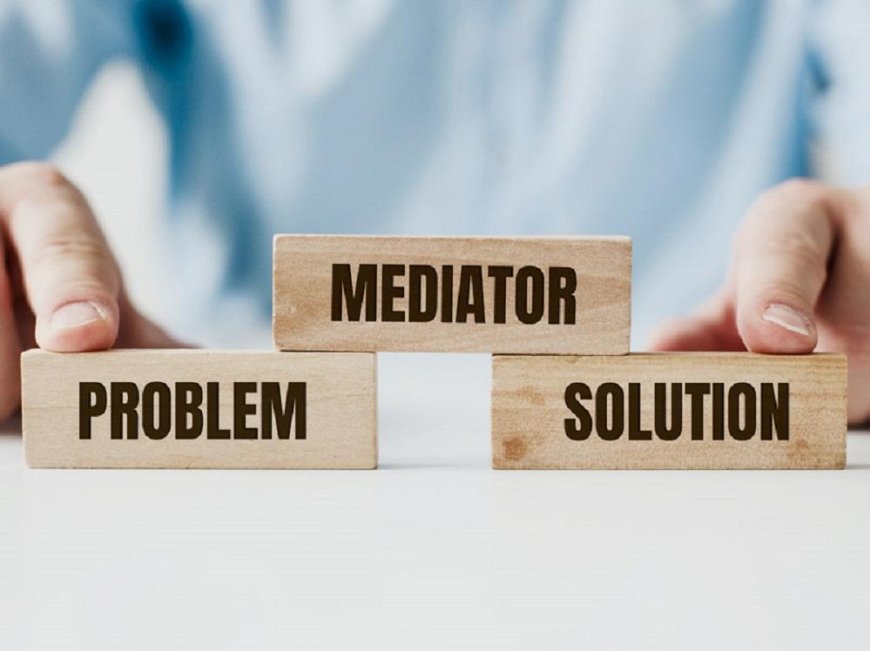Formation of mediation skills in the educational process
help of teachers in resolving conflicts with the least loss, in a peaceful way. Formation of mediation skills in the educational process.

Psychological and pedagogical aspects of interaction in education. Conflicts accompany us all our lives. And the disputes of children are no less important than those of adults! In addition, children often experience conflicts even more acutely, especially in adolescents. The latter perceive almost every problem extremely painfully (often due to hormonal changes). Therefore, students need the help of teachers in resolving conflicts with the least loss, in a peaceful way. Formation of mediation skills in the educational process.
In addition, a peaceful conflict helps not only to clarify the situation, but also to truly establish and even improve relations, An international mediation adviser, talks about how to do this in the framework of the Internet conference "Psychological and pedagogical aspects of interaction in education."
Why should a teacher know the art of mediation? It is thanks to her that the parties learn to resolve conflicts peacefully, develop stress resilience and a conscious attitude to problems. At the same time, the level of aggression, bullying, violence decreases, empathy, tolerance, and understanding of others develop. And also communicative and leadership qualities, skill of active listening improve.
Mediation and its basic principles
A teacher who acts as a mediator in a conflict helps the parties reach a consensus. That is, the mediator - a bridge that allows the parties to understand, organizes a trusting atmosphere of conversation.
To understand the essence of mediation, consider its principles:
Voluntary - mediation is conducted with the consent of teachers and students;
Awareness - the parties to the conflict should know that the teacher will help to resolve the dispute, and not just get involved in the conflict;
Neutrality and impartiality - the parties themselves solve the problem, the mediator only asks clarifying questions;
Independence - the parties, the school management, the parents should not put pressure on the mediator, instead he or she should not give preference to either party;
Confidentiality - the mediator should not disclose details of the dispute to others;
Equality of rights - the parties to the conflict are equal, their opinions are equally important and deserve respect;
Activity - all interested in resolving the conflict, behaving constructively;
Structure and flexibility - despite the clear stages of mediation and its specific sequence, it is still an informal process in which the mediator must take into account the characteristics of the parties (sensitivity of the child, increased activity, hyperexcitability, etc.).
What for: how to apply mediation
Do you see the conflict? Recall the principles of mediation and help the parties to resolve the dispute constructively by creating the necessary conditions.
Usually in a conflict, the parties express only their own position, for example, "I do not want to see him (or her)", "We have nothing to talk about" and so on. There is no place for facts here, it is difficult to reach an understanding from such a position.
Must Read: Goal setting: set a goal and find resources
Therefore, the mediator's task is to find points of intersection between the parties to the conflict. To do this, you need to learn about the interests, fears and needs of everyone. And when the needs of the parties are met, the conflict will be resolved.
We learn and teach children mediation
Is it enough to just know how to apply mediation? Of course not. Certain competencies are needed to resolve a dispute effectively. These are conflict recognition, critical thinking, time management, questioning, positive thinking and summarizing.
To do this, regularly perform interesting exercises with children.
Conflict recognition
- Children tell a story on any topic. Condition: at least one of the characters must be a member of the student's family.
- Documenting the problem. Children choose a problem and then prescribe the steps needed to solve it
Critical thinking
- Opposing opinions. Choose a thesis that is being debated and give the children two options for explaining it, one of which will be incorrect. Children should analyze the thesis and try to determine which explanation is wrong by providing a reasoned answer.
- Roundabout. The teacher identifies a problem and writes it down on a separate sheet. For example, "The air in our city is very polluted." You can now pass the sheet to one of the students: he should write down the idea for solving the problem, and then pass the sheet to the student sitting on the left. The exercise continues until the sheet is returned to the teacher.
Ability to ask questions
Quick poll. The teacher identifies the topic of discussion, students should write down all the questions on the topic that come to mind. Then, among all the questions, the "top" of the best is chosen, which is later discussed.
An incomprehensible fragment. For one minute, students describe in as much detail as possible the moment of the lesson that they misunderstood.
Positive thinking
Invite students to analyze a specific life situation or their response to a lesson or the results of independent work. Next, they should describe their mistakes in a positive way.
Ability to summarize
One word. It is necessary to describe the newly studied topic in just one word. Then the children have to explain why they chose this word, but they also need to do it as briefly as possible - in one paragraph.
Harvesting. At the end of the lesson, ask students to fill in a table with three columns: what they learned, why it is important, how it can be applied. Remaining questions and want to know more
